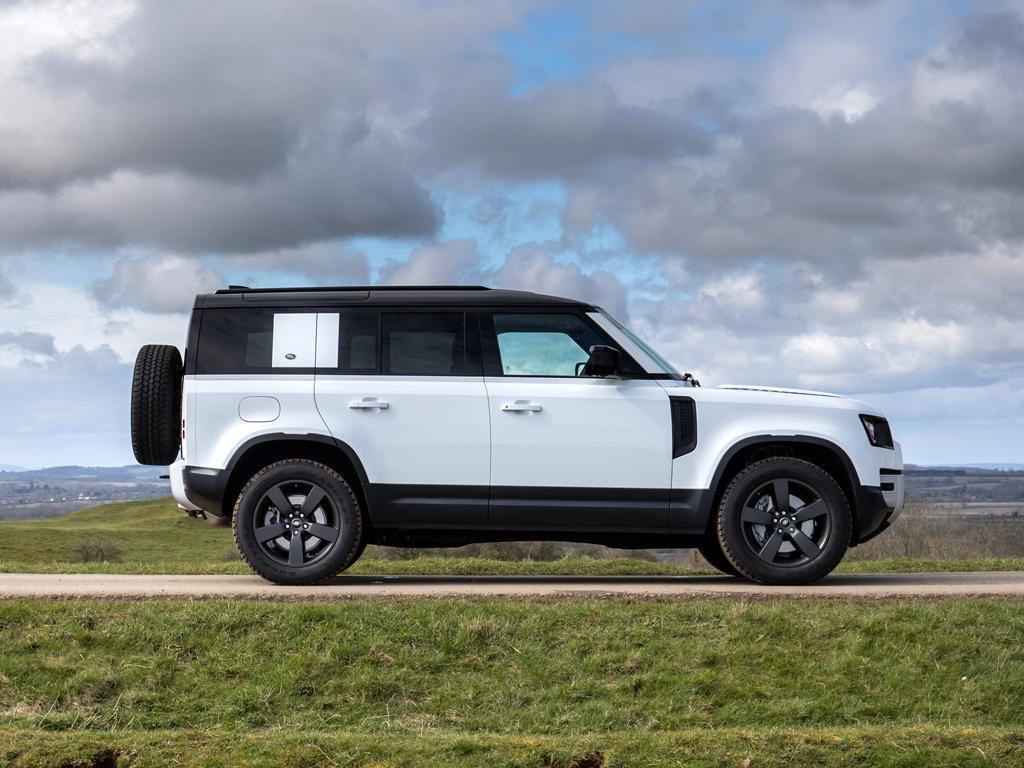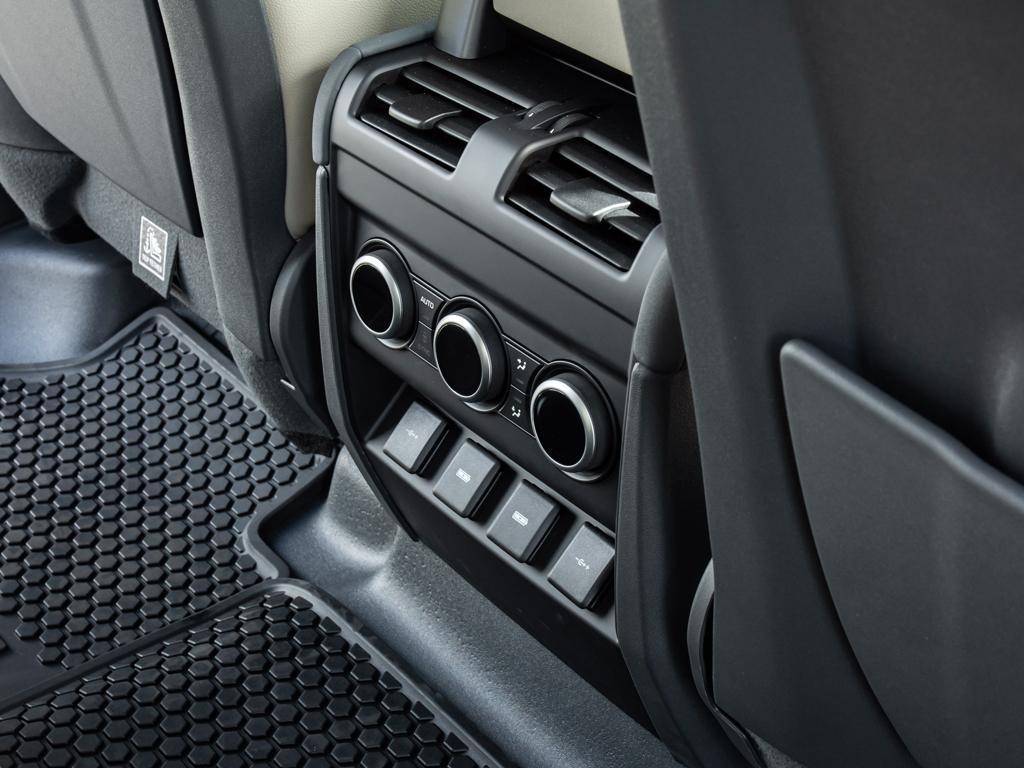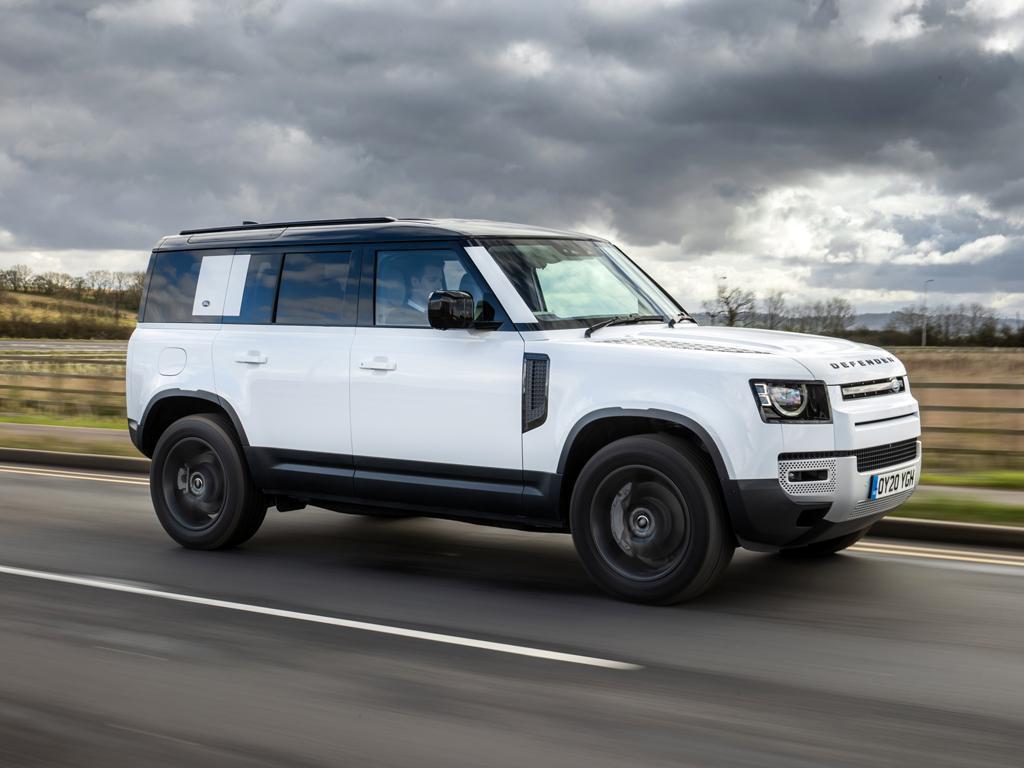2020 Land Rover Defender | UK review
PH has also driven the new Defender in the UK. Just around the block this time...

A month or so after we drove the Defender in Namibia, Land Rover invited PH back to drive the car in the UK. The backdrop could hardly have been more different, not just for the stark contrast of a rainy day in the Midlands, but for the colossal disruption caused by the Coronavirus pandemic. Instead of a UK launch involving hundreds, Land Rover's best-laid plans have been condensed into a pub car park. Even the planned whirlwind tour of Gaydon's new studios had been canned; JLR's vast facility is no longer accepting visitors.
Obviously it's a shame that it's come to this given the stupendous amount of work which goes into launching a car, especially one this significant. Although the situation does provide an irresistible parallel to the Series I, a car conceived, developed and built in a country shattered by six years of total war and still subject to some rationing. We're not quite there yet, of course - but when the talk inside the pub is of JLR's pledge to help the UK government in any way it can, it does rather set current priorities in order.
Further discussion of the new Defender is frankly a welcome distraction. As in Namibia, there is a choice of P400 petrol and D240 diesel to drive, except that these early cars are not weighed down with the various Explorer Pack accessories, and are on standard-fit alloy wheels and all-season tyres. This difference certainly helps to tone down the more ambitious aspects of the Defender's styling, although the setting does its bit, too: rather tellingly, the car looks far more at home outside a gastropub than it did in rural Africa.

Question is, does it feel at home on the road? Resoundingly, the answer is yes. Any lingering doubts over the car's ride and refinement - things which couldn't be clarified in Namibia - are wrapped up almost instantly. The Defender rides very astutely; firmer than a Discovery and with more acknowledgement of the road surface than you'd get from anything wearing a Range Rover badge - but there is plenty of air-sprung, long-travel pliancy and no undue concern about the level of noise you're subjected to.
Land Rover likes to talk at length about its product pillars, and, dynamically speaking, it isn't hard to see how the Defender slots in between the Discovery and Range Rover Sport. JLR's Chief Engineer, Mr Mike Cross himself, confessed to PH that the car's character wasn't terrifically difficult to tune into an already well understood layout - the crucial thing was that it had a character; one that distinguished it from its familiar stablemates without being unfaithful to the model's legacy.
As we learnt in Namibia, the Defender delivers handsomely in this regard. The steering resistance is beefier, but well matched to an assertive, big-shouldered turn in. On a high-grip surface the car's roll rate is obviously more noticeable, although only in the way which seems inherent to big Land Rover products - which is to say, very well controlled after the initial lean and commensurate with driver expectations for such a tall car.

Much as it did off-road, the Defender drives with more purpose than a Discovery. There is genuine satisfaction to be had from threading it down a spindly B-road, its obvious size not inhibiting either your ability to place it in the lane or willingness to coax it around corners a little quicker than is strictly necessary. Much like its peers, it hustles along at six-tenths to seven-tenths very contentedly indeed. Clearly it has a taller centre of gravity than the Range Rover Sport and therefore fewer of the fast-road smarts, but the chassis poise and a general sense of connection with the road surface is never in question - and that isn't exactly a given in a heavy, air-sprung SUV.
For the most part, the Defender does a sterling job of concealing its considerable mass. The likeable compromise between handling and comfort has you cheerily leaning into bends with it - a quirk that served its predecessor very well. But there is a limit to the finesse, and it's easily findable if you attempt a smallish roundabout with too much vigour. Amusingly, the Defender's balance - much-heralded on Namibia's soft sand - does not desert it, but the car above it does suddenly seem like a bit of a brute.
That's understandable, of course, and easy to forgive. Somewhat less condonable is the effect it has on flat-out performance. Away from the road, 400hp seems ample. Generous, even. Back on it, with your point of reference reset, the P400's delivery feels more industrious than abundant. Land Rover claims 5.8 seconds to 60mph (6.1 to 62mph), which seems optimistic to the point of imaginary. The quickest Defender is brisk and responsive and amenable to the point of effortlessness. But outright fast it is not.

Does it need to be? That, ultimately, is the post-pub question. Elsewhere, the car is much as we left it in Namibia. Which is to say, very persuasive. Probably more so, because even a brief trundle around Warwickshire confirms that the job has not been half done: take away the dunes and the elephants and the cerulean sky, put back roads and people and normal tyres, and the Defender is still that little bit different, that little bit special. As it needed to be.
But is it better as a diesel then? Is the D240, equipped with 317lb ft of torque and a slightly lower kerb weight, the one to have if the most powerful version isn't going to really blow your hair back? Certainly the difference in price makes a compelling case; the 2.0-litre Ingenium unit can be selected much lower in the trim line-up, making it £52,070 out of the gate. Even with its fundamental superiority in drivability and refinement, it's hard to argue that the straight-six is more than £27k better than the oil burner.
Or it's hard in the UK, at any rate. Put the sand and the wildlife and the empty horizon back in, and you'd want the long-striding, drone-free engine - and to hell with the cost. As virtually every overseas buyer will presumably opt to do. But here you'll need to think twice, because, price aside, the Defender's charms honestly have little to do with how fast it gets away from the line. Which shows just how good it really is.
SPECIFICATION | 2020 LAND ROVER DEFENDER 110 P400
Engine: 2996cc, six-cyl turbo, petrol
Transmission: 8-speed automatic, all-wheel drive
Power (hp): 400@5,500rpm
Torque (lb ft): 406@2,000-5,000rpm
0-62mph: 6.1 seconds
Top speed: 119mph
Weight: 2,343kg (DIN, 7-seat)
CO2: 257-277g/km (WLTP, 7-seat)
MPG: 23.2-24.9 (WLTP, 7-seat)
Price: from £79,655
SPECIFICATION | 2020 LAND ROVER DEFENDER 110 D240
Engine: 1999cc, four-cyl turbo, diesel
Transmission: 8-speed automatic, all-wheel drive
Power (hp): 240@4,000rpm
Torque (lb ft): 317@1,400rpm
0-62mph: 9.1 seconds
Top speed: 117mph
Weight: 2,248kg (DIN, 5-seat)
CO2: 234-251g/km (WLTP, 5-seat)
MPG: 31.7-29.6 (WLTP, 5-seat)
Price: from £52,070
Click here for the long review of the new Land Rover Defender













Gassing Station | General Gassing | Top of Page | What's New | My Stuff



